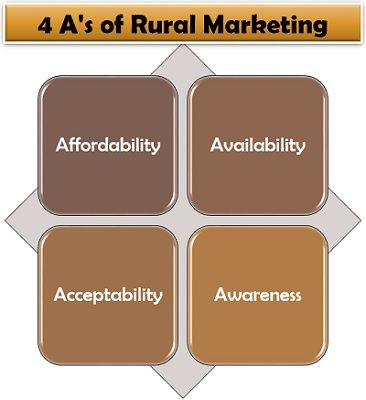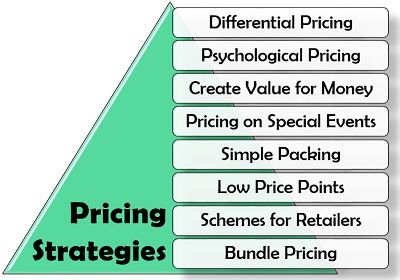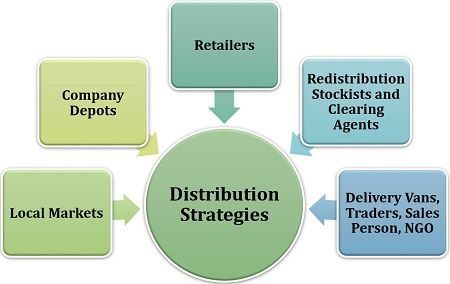Definition: A rural marketing strategy refers to the planning of adequate supply of consumer goods and agricultural input to the villages at an affordable price to fulfil the needs of the consumers residing in these rural areas. Rural markets have a high potential and can generate huge sales volume for the companies which manufacture cost-efficient products and have active supply chain management.
For Example; In rural markets, most of the selling products belong to spurious brands. These with a name similar to those of well-known brands have penetrated the Indian rural markets due to the product’s look-alike feature (copy of branded products) and cheap prices.
A brand named ‘Vinovo’ (often misunderstood as ‘Lenovo’ which is a renowned smartphone brand) is selling budget mobile phones to the rural consumers, that look identical to the Lenovo handsets.
However, brands like GlaxoSmithKline (GSK), a UK based multinational FMCG launched a product, Asha-milk food drink for rural consumers. The product was 40% cheaper than the outcomes of well-known brands like Horlicks. It gained popularity due to its excellent pricing strategy.
Content: Rural Marketing Strategy
- 4 A’s
- Strategies
- Product Strategies
- Pricing Strategies
- Distribution Strategies
- Promotion Strategies
- Other Strategies
4 A’s of Rural Marketing
Whenever a company plans to enter the rural markets, it has to restructure its marketing strategies to suit the needs and requirements of rural consumers. Since they are mostly illiterate and belong to a low-income group.
Following are the various components of 4 A, described in the context of rural marketing: Affordability
Affordability
In rural areas, the income of the people is meagre. This is the reason for which the consumers are unable to spend on luxury goods. Moreover, they are mostly concerned about buying the necessary products.
Keeping in mind the low affordability of rural consumers, marketers must plan for small packaging of the products at an economical price to capture the attention of price-sensitive consumers.
Availability
The regular supply of the products in the remote areas is another challenging task. We know that rural consumers are usually daily wage earners who spend on the necessities every day. But, many times, the product is not readily available in the rural markets, due to which such consumer may shift to another substitute product.
Acceptability
The product should be designed in a user-friendly manner such that it satisfies all the needs of a consumer by deriving them some value. If the rural consumers are willing to put in extra money for buying the product, it shows their acceptability towards the brand.
Awareness
A rural consumer has low accessibility to the media, such as television and smartphones. Moreover, they have a very different perspective from that of an urban consumer.
Therefore, marketers need to focus on that medium of communication and entertainment which are commonly available in rural areas. This will help them to create brand awareness and grab the attention of these potential rural consumers towards their product.
Rural Marketing Strategies
When we talk about 4 P’s of marketing mix of a product, the first thing that strikes us is the combination of product, price, place and promotion. This is what we will be discussing under rural marketing strategies.
Let us now discuss these four components of the marketing mix concerning the product being introduced in the rural market:

Product Strategies
The company first needs to analyze the requirements and demand of the rural consumers. Since whatever products are being sold in the urban areas may not be acceptable in the villages also.
Following are some of the factors which are taken into consideration while framing the product strategies:
- Product Launch: The rural consumers earn a lump sum amount two times a year according to the crop cycle. Therefore the product must be launched only in these harvesting seasons, i.e., rabi and kharif.
- New Product Design: The product design for an urban market may not perform well in the rural market too. Thus, the company must plan for a robust model of the product (especially of durable goods) while launching it for rural consumers.
- Brand Name: Brands are gaining significance in the rural markets as the people are becoming aware and informed. However, in these markets, brands are recognized by the simplicity of their name, visual logos, taste and colour of the products.
- Small Unit Low Price Packaging: Considering the daily wage earners who have less disposable income; the product should be packed in small units with a minimal price to serve the requirements of the rural consumers.
Pricing Strategies
In rural markets, consumers are less brand conscious and more responsive to the price of the products. The company’s pricing decision is dependant upon the consumers’ occupation and income pattern.
Let us now understand the various strategies followed by marketers while planning for the product pricing in rural markets:
Differential Pricing: The pricing strategy for the rural markets should be different from that in urban markets. The product should be priced slightly cheaper to grab the attention of rural consumers.
Psychological Pricing: The psychological pricing is a tactic used to make the deal appealing to the consumers. A product is priced at odd amounts like ₹9, ₹59, ₹99, etc. which seems less than ₹10, ₹60 and ₹100 respectively. It is a fruitful strategy in rural marketing.
Create Value for Money: The rural consumers are more concerned about the durability of the products, i.e., the value it generates to the customer. They tend to pay a slightly higher amount for a better product with additional features.
Pricing on Special Events: In the rural areas, occasions and festival are highly valued and celebrated. Therefore, companies make use of these special events to attract rural consumers by giving them various offers and discounts.
Simple Packing: Rural consumers have a basic living standard. They don’t like to spend much on the products which have fancy packaging; instead, they look for the utility of the product. So it would be a waste of time and money if the brand spends on sophisticated product packaging.
Low Price Points: A consumer belonging to the rural area have limited resources out of which he or she needs to buy various daily utility products. Therefore, a product must be priced quite low to make it affordable for such consumers.
Schemes for Retailers: Rural retailers are the most significant medium of sales in the village. The companies must come up with cash discounts, gift schemes, offers and quantity discounts to build the loyalty of such retailers towards the brand and increase product sales.
Bundle Pricing: A bundle is a mix of different products in a single pack available to the consumer for a reasonable price. The marketers must plan for a product bundle pricing to make the offer appealing to the consumers and survive in the competitive rural market.
Distribution Strategies
To create a regular demand for the product, the marketer must ensure the uninterrupted supply of the goods in the rural markets. The product availability can be achieved by implementing the following strategies:
- Local Markets: In rural areas, local markets exist in the form of fares, farmers’ market, Sunday market and feeder market. Here, rural people gather to buy goods and communicate with each other.
- Company Depots: The company owns warehouses and depots in some major rural areas to make the goods readily available to the native consumers and that of nearby cities.
- Public Distribution System: The government runs fair price shops in the villages to sell the daily utility and durable products at a nominal price. In India, one such PDS is the ration shops.
- Retailers: The most straightforward way a rural consumer can acquire a product is through a retail shop located in the village. Therefore, companies must plan their supply chain management in such a way that the goods are regularly made available to these retailers.
- Redistribution Stockists and Clearing Agents: The redistribution stockists and the clearing agents are the intermediaries between the companies and rural consumers. They supply goods to the retailers from where it reaches the consumers.
- Delivery Vans, Traders, Sales Person, NGO: The company must run its van for delivering goods in the remote areas where there is lack of proper transportation facility.
Promotion Strategies
Promotion is the stage where the product is introduced in the market. In rural markets, the promotion mix should be planned in such a way that rural consumers can easily understand the product features.
Following promotional strategies are used by the marketers:
- Mass Media: The villages have limited means of entertainment which include tv, radio, press and cinema. The companies advertise their products through these popular mass media.
- Personalised Media: It can be seen as hiring a salesperson for performing door to door sales and collecting information and queries related to the product and the brand.
- Local Media: As we have already discussed in the distribution strategy, local media includes audiovisual vans, animal parades, fares, folk programmes, etc. Displaying advertisements, video clippings, short films, posters and paintings at these places is also useful promotional activity.
- Hiring Models and Actors for Promotion: Rural people are fascinated by the television actors and models and consider them as their role models. Therefore the marketers must engage famous faces in their tv commercials to promote the brand.
- Advertise Through Paintings: The rural consumers are attracted towards the bright colours and the pictorial representation of the products; hence, wall paintings are a good idea in the rural markets.
Other Marketing Strategies to Conquer Rural Markets
The rural markets function diversely from the urban markets. Therefore, marketers need to customize a whole set of different strategies to penetrate the rural market.
Being updated with the traditions and values of the rural consumers and planning the marketing strategies accordingly, like a promotion campaign targeting a festival is another suitable option.
Rural marketing should not be used as a means of demoting under-performing managers. Instead, an enthusiastic person belonging to the rural background having the willingness to work in villages must be appointed.
The marketers can introduce new business models and programmes with a social concern like promoting education or empowering women for overall growth.
To understand the market in a better way, the company can hire a rural marketing specialist agency which has prior knowledge and experience in the field and is well-versed with the regional language.
To estimate the feasibility of expenditure in rural marketing, the organization should determine its per capita sales in advance. The company must time the marketing cycle of products by the sowing, growing and harvesting seasons of the crops.
Rural consumers are slowly upgrading to technology with the help of smartphones and computers. The companies must make use of simple and easy to access technological means to create awareness about the products in rural areas.
As a means of digital marketing in the villages, marketers can opt for mobile messaging, internet ads, applications and interactive voice response to promote their products.
The companies must invest in rural marketing with a long-term perspective and should have the patience to achieve the desired results.
To develop a sharp brand image and loyalty in a rural market, the best way is the word of mouth publicity by the locals.
COLONEL KAAUSHIK SIRCAR says
excellent article…wish to take some excerpts for my book on Rural marketing…pl let me know if one can
Mohd Shahid says
Good Insight to develop rural market